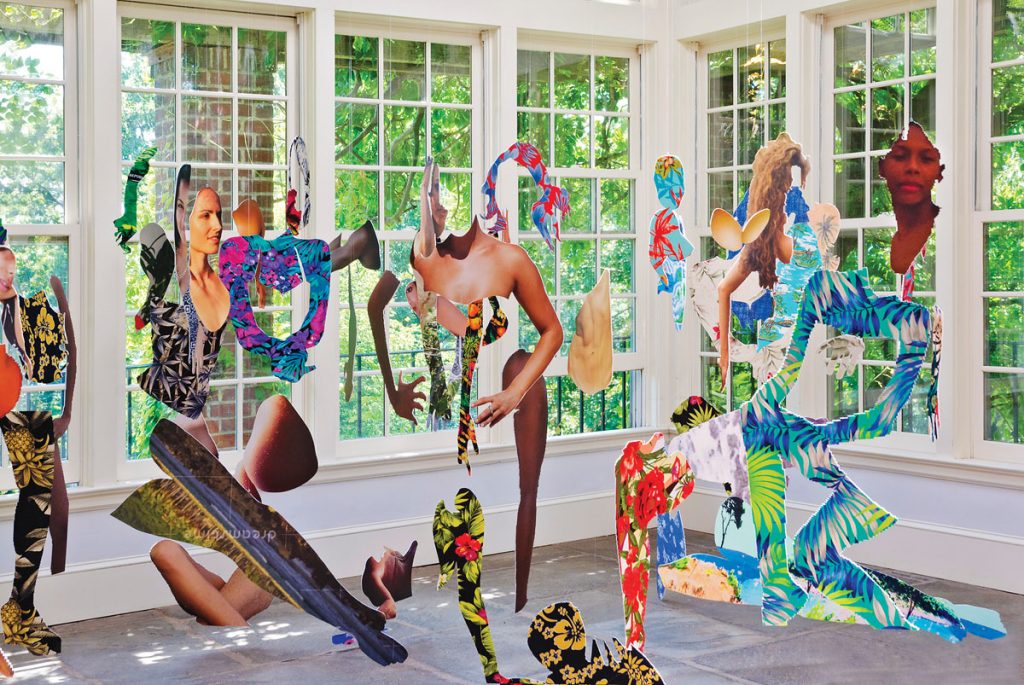
To continue its tradition of showcasing art that moves the masses, New Wave will host Dominican American multidisciplinary artist Joiri Minaya in the third installation of its pioneering artist-in-residence program. Like Renzo Ortega and Estelle Mainsonett before her, Minaya will set up shop in a studio space in Rosemary Square beginning March 8, where she will cull inspiration from the sights, sounds, and people of downtown West Palm Beach. Minaya’s performative interventions and interactive installations investigate intrapersonal and societal relationships to the female body, with poignant commentary on identity, hierarchies, and multiculturalism’s impact on both.
PBI caught up with Minaya ahead of her residency to learn more about the inspirations behind her provocative art and her directions for her time with New Wave.
PBI: What moves you to create and perform your art?
JM: I’m inspired by the body, landscapes, nature, beauty, design, decoration, and history. I examine the ways in which those elements have been codified and their hierarchies–which are obsolete and come from an unfair past–yet are still preserved by many, in many ways. I’m moved by the need to explore my interests and express myself in ways that aren’t easily pigeonholed and that play with or subvert the practice of categorizing entirely.
As a veteran of residencies, are you looking to explore particular themes during your time at New Wave?
I look forward to discovering the ways in which New Wave’s residency structure and its location will impact my work, but I don’t have any expectations. In my experience with residencies, these things happen organically and I can’t plan ahead for them. Given that this is a relatively short residency–with public programming, creation of print editions, and public installations—I will try to focus on one specific body of work, but I’m flexible to also engage with local elements, should they end up being particularly inspiring or relevant to the work I’m making.

How are you hoping to grow as an artist during your residency?
The time and space that the New Wave residency will provide to will allow me to continue developing my work, and I’m looking forward to the site-specific connections and inspirations that will come out of it. I have a loose plan and goals that I expect to, but I try to leave room for the variables that manifest quite often in my experience with residencies. In hindsight, I can see how my work has grown a lot after past residencies, so I look forward to seeing how it will grow after this one!

What are you looking to impart on viewers of your work? What do you want them to learn about you or the populations of people you represent in your art?
While I advocate for an acknowledgement of a diversity of voices, experiences, and identities and their ability to exert their power equally (my work comments on the lack of this), I don’t represent any population other than myself. The art world (and many other sectors) tends force people attached to a specific identity or heritage to “represent” that group. This tendency informs the very issues I’m trying to address.
I’m interested in the construction of the “other” in the minds of the ones who get to determine the conversation, and in using their language to confront and insert my own agency. In that sense, I want the viewer of my work to be left with a fruitful reflection, a critical sense of self-awareness, a more expansive definition of humanity that is applied to “the other” as much as to “the (m)self”.








Facebook Comments